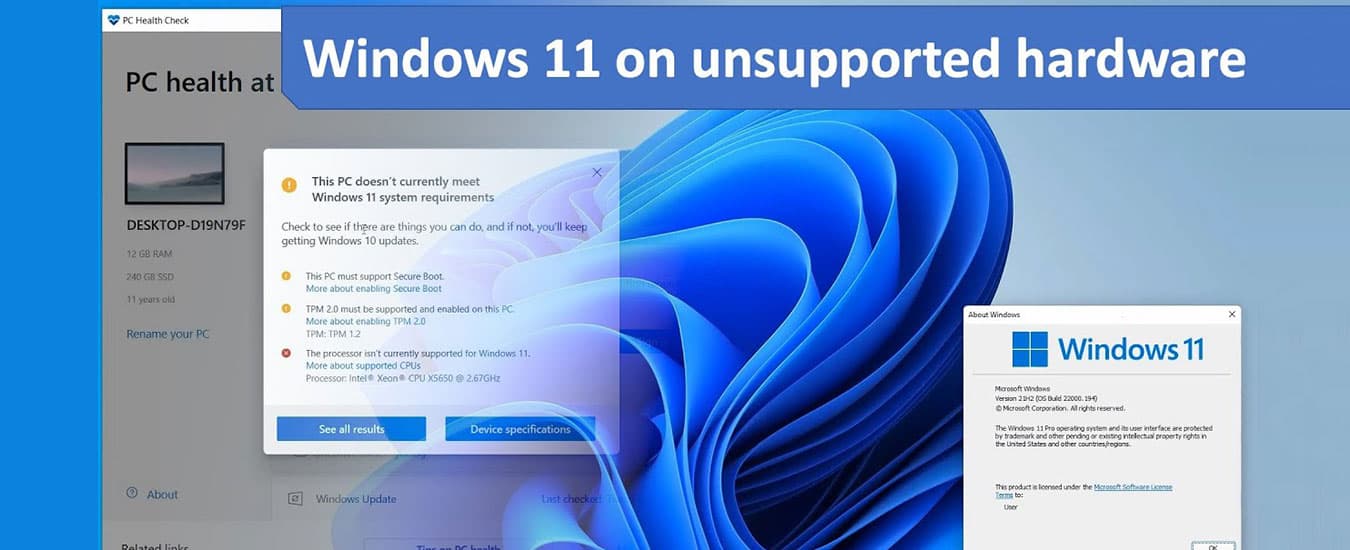]If you’ve been wondering if you can install Windows 10 on your unsupported hardware, read this article. You’ll learn how to install Windows 10 on older CPUs and TPM 1.2 chips. In addition, you’ll learn how to create a system image before upgrading. Hulu App is one of the popular app or website, But users are facing many problems like Hulu Error code, Hulu error code drmcdm78: Here is the Easiest Method to Fix.
Hopefully, the following steps will make it easier to restore your PC to its original condition. And, best of all, you’ll have a copy of both the Windows 10 and Windows 11 installation media.
Upgrade to Windows 11
If your PC has an unsupported TPMO or CPU, you can use the Registry Editor to upgrade to Windows 11. Make sure that the device you’re installing Windows on supports Secure Boot and TPM 1.2. Then, double-click on the entry AllowUpgradesWithUnsupportedTPMOrCPU and select the appropriate value. After the Windows installation process has been completed, your PC should run as normal. Windows will then prompt you for some basic information.
While the first Feature release of Windows 11 allowed you to upgrade on this type of hardware, the Windows Insider Program blocked this installation option. This was due to an unintended bug, which Microsoft is currently investigating. While the Windows Insider Program is investigating the issue, the company has not changed the system requirements for Windows 11 22H2.
Create a system image before
It’s highly recommended that you create a system image before installing Windows 11. This will save you time in case something goes wrong after installing Windows 11. Creating a system image will also allow you to roll back to Windows 10 if needed. Depending on your hardware and operating system, you may only need to edit one registry key. If your PC is not supported, it is possible to create a system image using the Rufus bootable creator app.
When you run the Windows 11 Installation Assistant, you may get a message telling you that your system does not meet the minimum requirements for Windows 11. If this is the case, you’ll need to create a system image using a virtual machine application. This way, you can try out the new operating system and decide whether you want to install it. If you run into any problems, let us know in the comments section below.
Create copies of Windows 10 installation media and Windows 11 installation media
In order to create bootable USB flash drives for Windows 10 and 11, you must first download the ISO file from Microsoft’s website. An ISO file is a disk image and can be used to create a bootable USB drive, burn an optical disc, or boot a virtual machine. You can also create a bootable DVD using a third-party tool called RUFUS.
In case your computer does not support Windows 11, you can try installing the operating system manually using the tools on the Microsoft website. To do so, you must first confirm that your device is in an “unsupported state.” Microsoft defines unsupported hardware as a device that does not meet the minimum requirements for Windows. Additionally, unsupported hardware won’t be entitled to receive Windows Update updates. You can still install Windows 10 on an unsupported device, but you will not receive any security or technical support.
Once you have the Windows 11 installation media on hand, you should check the compatibility of your hardware with the new OS. You can find out if your PC is eligible for the upgrade by running the PC Health Check App. If it fails, you should make a backup. You can use Rufus to create bootable disks on unsupported hardware. But before you do that, you need to ensure that your computer meets the system requirements and meets the latest Windows update requirements.
Install Windows 11 with older CPUs and TPM 1.2 chips
There are two ways to install Windows 11 on your PC without triggering the TPM check: through a virtual machine or the ISO image. If your CPU does not support TPM 1.2, you can bypass this check by adding a registry key. You can also add a new DWORD value to the operating system’s registry to enable a TPM 1.2 bypass. To accomplish this, follow the instructions in the Windows 11 FAQ.
To install Windows 11 on an older CPU or TPM 1.2 chip, you must first make sure that your computer has a TPM 2.0 chip. Many new PCs do not have this chip installed. If you do, you can easily remove it using the TPM 2.0 tool, but you will have to buy a new computer. Once you’ve done that, you can install Windows 11.










